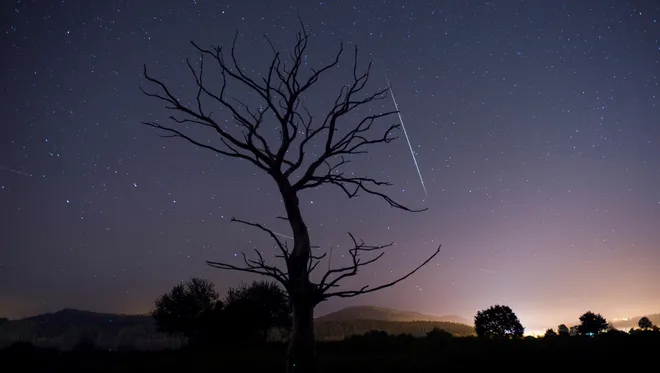In the period from mid-January to early April, our planet moves in an area of space with a reduced concentration of interplanetary dust. This is manifested, among other things, in the absence of significant meteor showers and a general decrease in the number of “shooting stars”. But already in the middle of spring, bright meteors belonging to the swarm of Lirids begin to appear more and more often in the sky of the Northern Hemisphere.

The radiant of this shower is located in the constellation Lyra, about 10° from Vega, the second brightest star in the Northern Hemisphere of the celestial sphere. The maximum of Lirids usually falls on April 21, but it is noticeably stretched in time. Sometimes, for half a day or even more, observers register about 20-25 meteors per hour.
The first mention of the Lirids was found in Chinese chronicles dating back to 687 BC. Thus, it is the oldest of all known meteor showers. From time to time, it pleases astronomers with “star showers”. Unfortunately, they are irregular and unpredictable, in contrast to the famous Leonid meteor showers. In particular, a hundred years ago — on April 21, 1922 — European observers noted a surge of Lirids activity to more than two thousand per hour.
As it was established at the end of the XIX century, the parent body of this shower is the bright comet Thatcher, which approached the Earth in May 1861. Then our planet even briefly plunged into the comet tail. Dust particles ejected from the nucleus of this comet continue to move along almost parallel trajectories close to its orbit. When they enter the Earth’s atmosphere, thanks to the perspective effect, we see them “flying apart” from one imaginary point — the radiant.

Since Comet Thatcher’s orbit is inclined to the ecliptic by almost 80°, the Lirid radiant is located far beyond the zodiac constellations. Due to its large declination, this shower is one of the most convenient for observations in our latitudes. Unfortunately, this year the weather conditions and fighting on the territory of Ukraine are not particularly favorable to astronomers, but still, if there are “windows” in the clouds, try to find the constellation Lyra in the sky. You may be able to see the fiery traces of meteor particles ejected by the “tailed star”, the return of which will not occur earlier than 2280.

